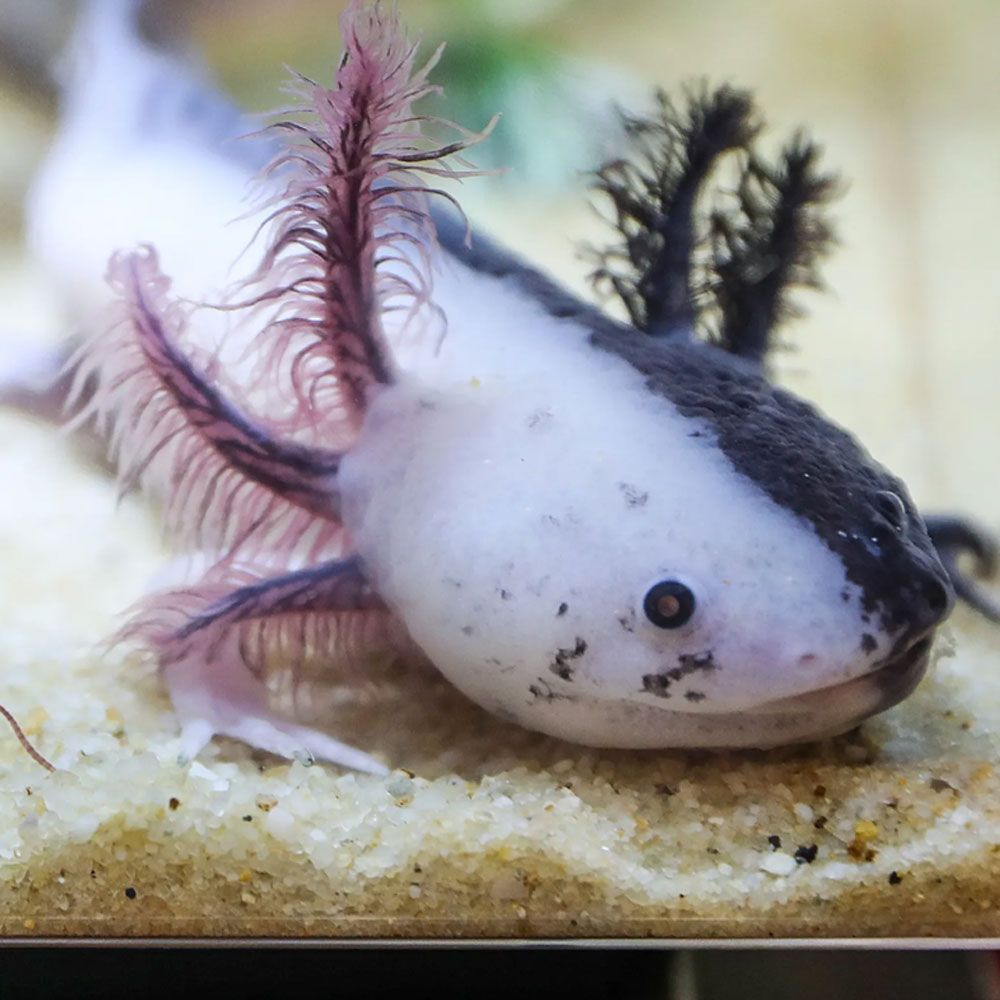Featured Image by IndyStar
If you are into extremely rare types of axolotls, you must learn about chimera axolotls. They are prized for their unique appearance and are suitable for home aquariums.
Their distinctive color combination is the result of the accidental fusion of two eggs, not genetics. So, you can say creating a chimera axolotl is pretty much a mystery!
These are best suited for experienced aquarists as they can care for them properly and sustain them as long-term companions. However, the greatest challenge is finding one and paying a hefty price for it.
If you’re curious to learn more about chimera axolotls, let’s explore their captivating world.
Note: If you get your hand on one, remember that their care requirements are similar to regular axolotls. So, refer to our comprehensive guide on axolotl care.
What are Chimera Axolotls?
Chimera axolotls are incredibly colorful with unique patterns. These axolotls result from the fusion of two developing eggs, leading to a split in their body, showcasing different colors on each side. This phenomenon is called chimerism.
To better understand this, let’s first take the example of a regular axolotl. A regular axolotl only has cells with one set of DNA. On the other hand, a chimera axolotl has two sets of DNA due to egg fusion.
Despite their distinctive appearance, there’s debate about whether they qualify as a true morph. This is because these variations are accidental and not intentionally bred.
How do Chimera Axolotls?
These have a deep body and a round head, with one color on one side and another color on the other side.
This makes them look different from regular axolotls. Further, they often appear vibrant with various colors and patterns.
They are generally larger than regular axolotls, growing up to 38 cm (15 inches) long.
To identify them, check for multiple iris colors in their eyes and look at their tails – if the tail has two different colors, it’s likely a chimera.
They have protruding eyes of distinct shape, unlike regular axolotls.
As they grow, each can have an uneven growth rate on different sides. The number of nuclei in their cells determines their size and lifespan.
They also have bony protrusions from skulls, making them seem like human beings. They also have human-like necks.
Chimera axolotls often face health issues due to their dual genomes, leading to genetic disorders.
What are the Types of Chimera Axolotls?
There are three distinct types of chimera axolotls:
Albino
They are the most common variety, characterized by their white bodies and vibrant red eyes that glow in the dark.
Pink-Eyed
They are rarer and more valuable. They have pink eyes and noticeable stripes along their bodies, making them highly prized among enthusiasts.
Heterozygous
They exhibit a blend of albino and pink-eyed traits and can be identified by one or two red spots on their bodies.
What are the ethical considerations associated with Chimera Axolotls?
Chimera axolotl research raises ethical concerns about manipulating nature. Some see benefits in understanding human development, but others worry about risks.
Strict regulations are vital to ensure responsible research and prevent unethical practices.
Debates continue on the ethical limits of chimera research, involving scientists, policymakers, and the public. The discussions aim to balance scientific progress with ethical considerations for responsible research.
What are the Pros & Cons of Having a Chimera Axolotl?
It’s said that chimera axolotls can withstand environmental diversity and challenges much better due to a range of genetic traits. They are more adaptable and have better survival skills. If introduced in the wild, they can survive.
The cons of chimera axolotls are their higher vulnerability to diseases, abnormalities, shortened lifespan, and other complications due to their genetic diversity.
How to Obtain Chimera Axolotls?
It is a matter of luck to obtain a chimera axolotl. They are incredibly rare and challenging to breed. Most don’t reach adulthood and suffer health issues, leading to a short lifespan with a survival chance of about 0.00001%.
Due to these challenges, they are rarely for sale and are mainly kept in labs or by breeders who succeed in breeding them.
Unlike other morphs, selective breeding can’t guarantee chimera axolotls, as their occurrence is a matter of chance, and forced fusion attempts usually fail.
A word from FishInAquarium
In conclusion, if you manage to get one, chimera axolotls stand out as exceptional additions to any amphibian tank. Despite their rarity and higher prices, their exotic color variations and friendly behavior make them worth the investment.
For both seasoned caretakers and newcomers, chimera axolotls present an opportunity to explore the marvels of nature.
If you found the details provided helpful and are interested in adopting a chimera axolotl, we encourage you to share this valuable information with others who share your fascination.
If you have additional inquiries or require further assistance in the future, please don’t hesitate to contact us via email.


